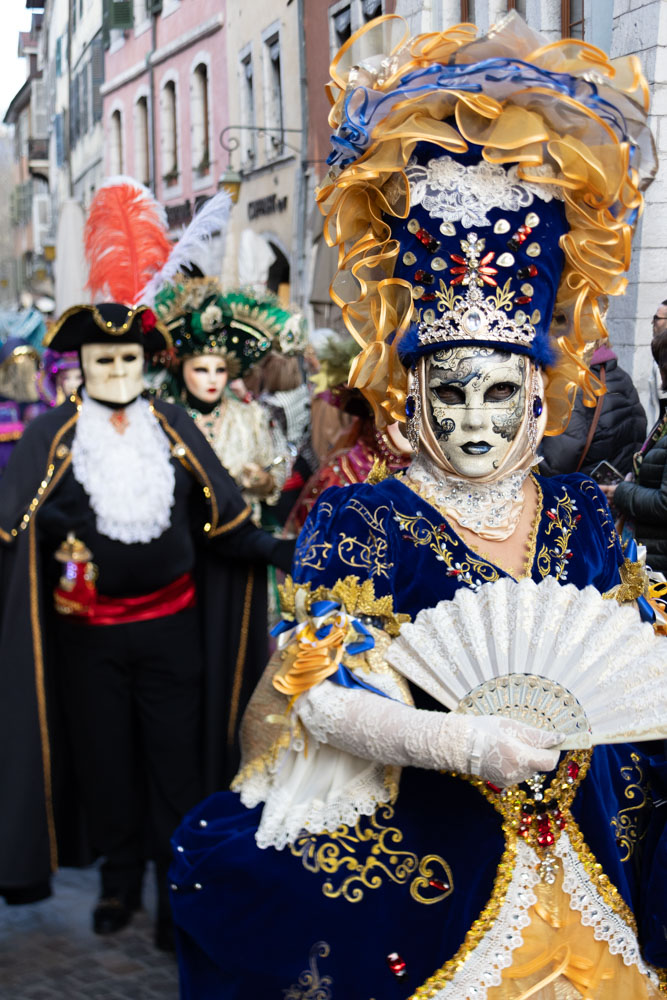
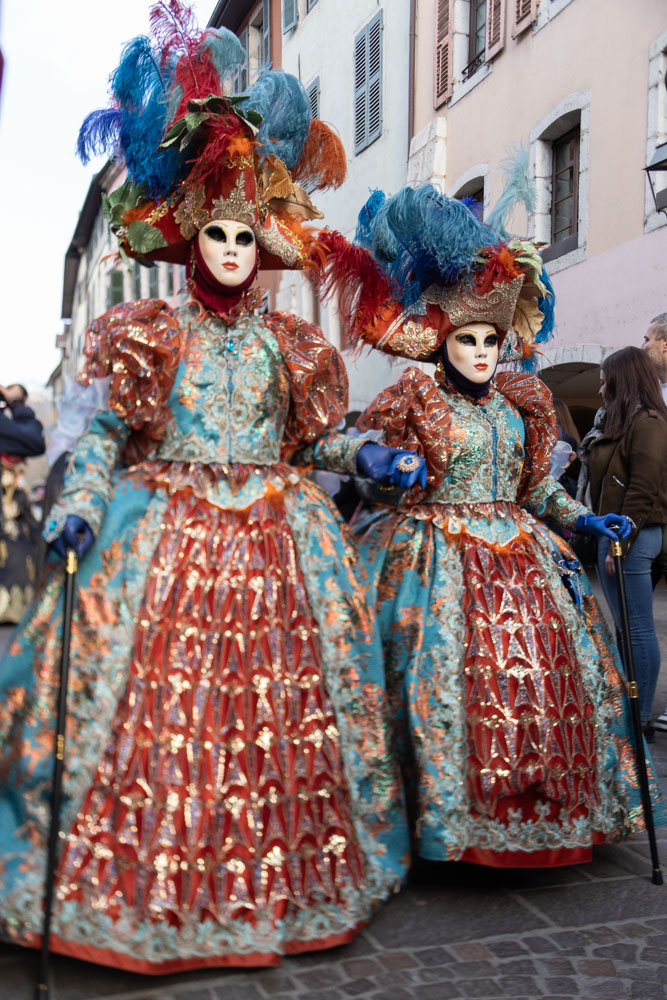
“Some of us may be grannies, but behind the mask we can be whoever we want to be,” said Marie, member of ARIA (Association Rencontres Italie Annecy), the organizing association of Annecy’s yearly Venetian Carnival. Marie shows a photo of her violet-colored ensemble from last year’s event, a disguise that she crafted from her own hands. In previous years Marie would travel to Paris to pick up the right tissue to complete her gowns. Younger, she would participate in the Carnivals held in Venice with her friends. She remembers the jewels that sparkled on opulent gowns in Venice, and the parties held thereafter in the palaces.
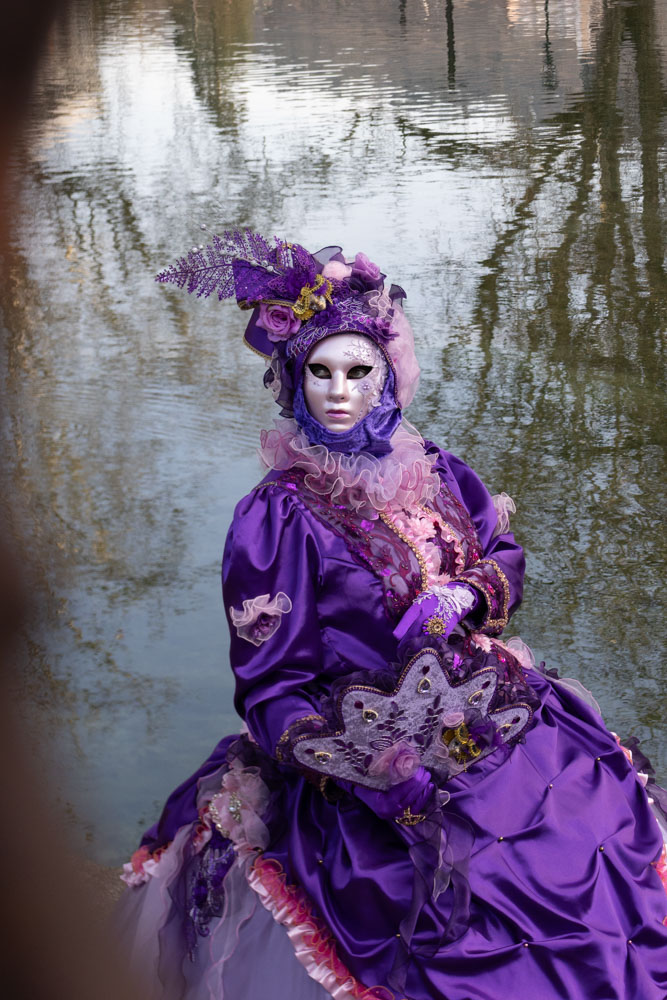
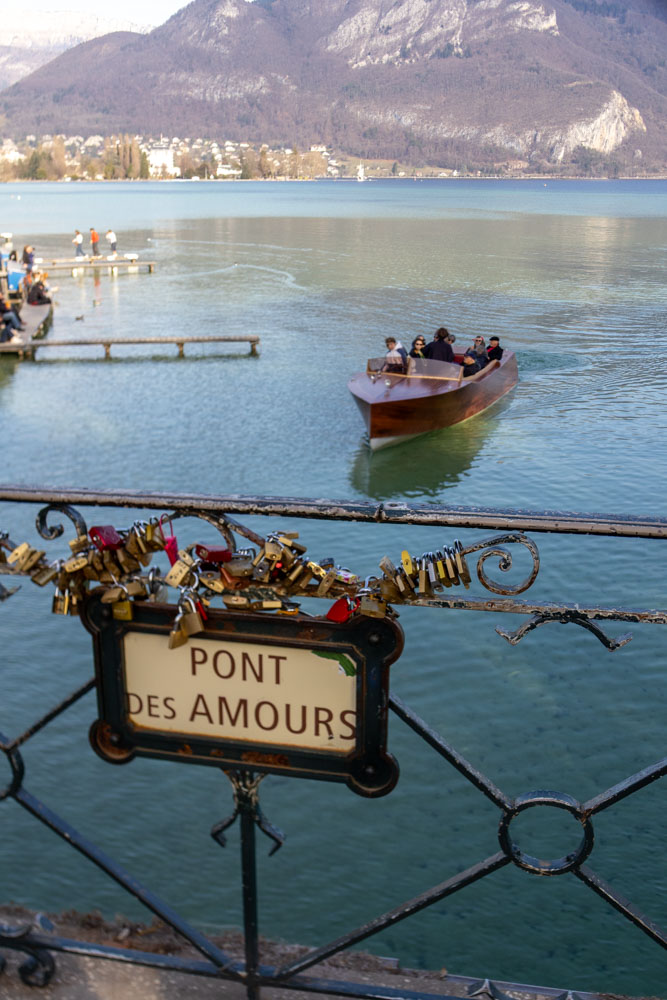
The event that began in Annecy, nicknamed the “Venice of the Alps”, in 1996 now welcomes approximately 400 participants, who parade throughout the cobblestone streets and clear water canals in Annecy’s Old Town over Carnival weekend. Piercing eyes capture my attention behind each mask, enhanced with black makeup to hide any traces of skin that could give clues as to the face behind it. Carnival participants are akin to celebrities in Annecy, drawing crowds armed with cell phones, eager to capture the lavish attire, even asking some artists for a snapshot with their babies.
Casanova and Carnival
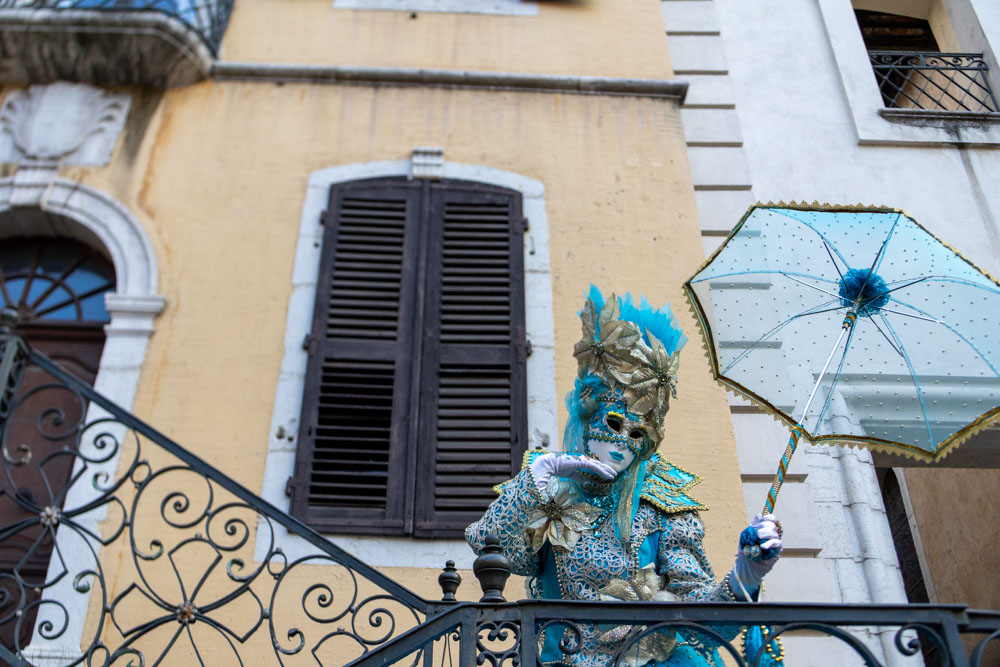
Approximately three million visitors flock to Saint Mark’s Square each year for Carnival in Venice, the city’s largest event. This year’s Carnival celebrated Giacomo Girolamo Casanova’s 300th birthday, whose pursuit of pleasure and escape from Venice’s Piombi prison made him a legendary figure.
According to National Geographic, a young Casanova was on the path to become an abbot, or head of an abbey, following his studies at university, of which he soon gave up: “My love [affair] proved fatal to me, because from it sprang two other love affairs which, in their turn, gave birth to a great many others, and caused me finally to renounce the Church as a profession.”
Instead of the abbey, Casanova preferred gambling or seducing in Saint Mark’s Square, which buzzed with life in 18th century Venice: fortunate tellers, boxing matches, comedies, and even wild bears. At the time, masks could be worn from December 26th until the end of the Carnival season in February or March, lasting roughly six weeks. This contrasts with today’s two-week period following the 40-day Christian fasting period known as Lent.
Over the years, Carnival has faced periods of prohibition, first under Napoleon in 1797, then under Mussolini in the 1930s, before being revived in 1980.1
Behind the Mask
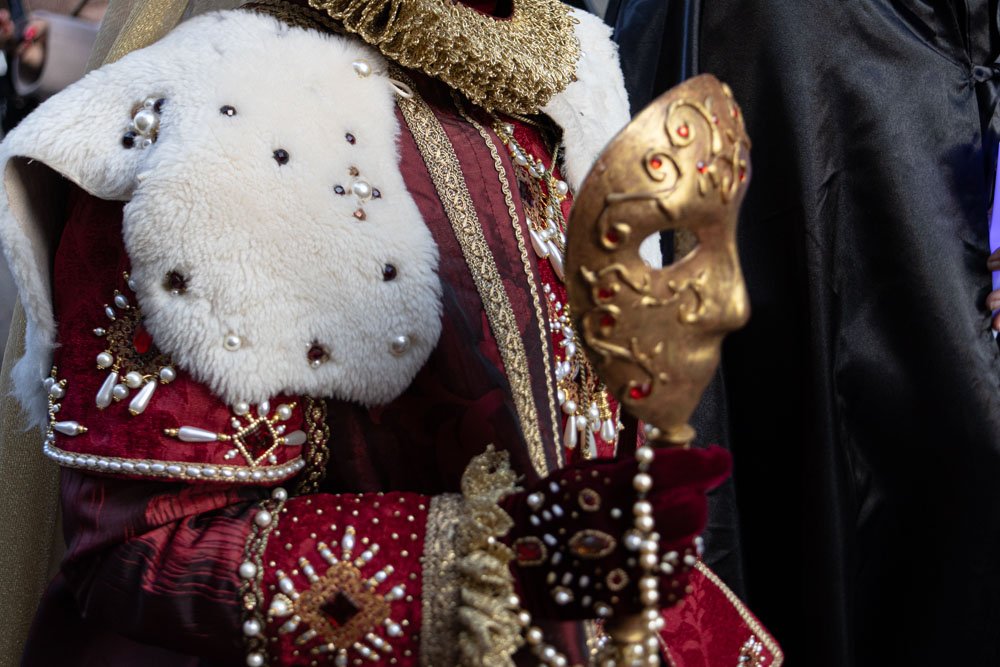
Director Stanley Kubrick passed away six days following the final touches of what he considered his greatest contribution to cinema: Eyes Wide Shut.
In the film, Tom Cruise navigates through a hauntingly dreamlike evening, renting a costume to attend an elite secret society gathering. As a non-member, his unwelcome presence is discovered when asked to provide the second password (the kicker being that none was provided). Cruise pulls off his mask, handcrafted at Venetian shop Kartaruga, also famously known for creating masks for a Louis Vuitton commercial featuring David Bowie and artists in Montreal’s Cirque du Soleil. In traditional fashion, the mask was created by making a clay face, used to create a chalk mold covered in paper mâché and embellished with golden leaves (the complete Venetian mask creation process may be viewed here).
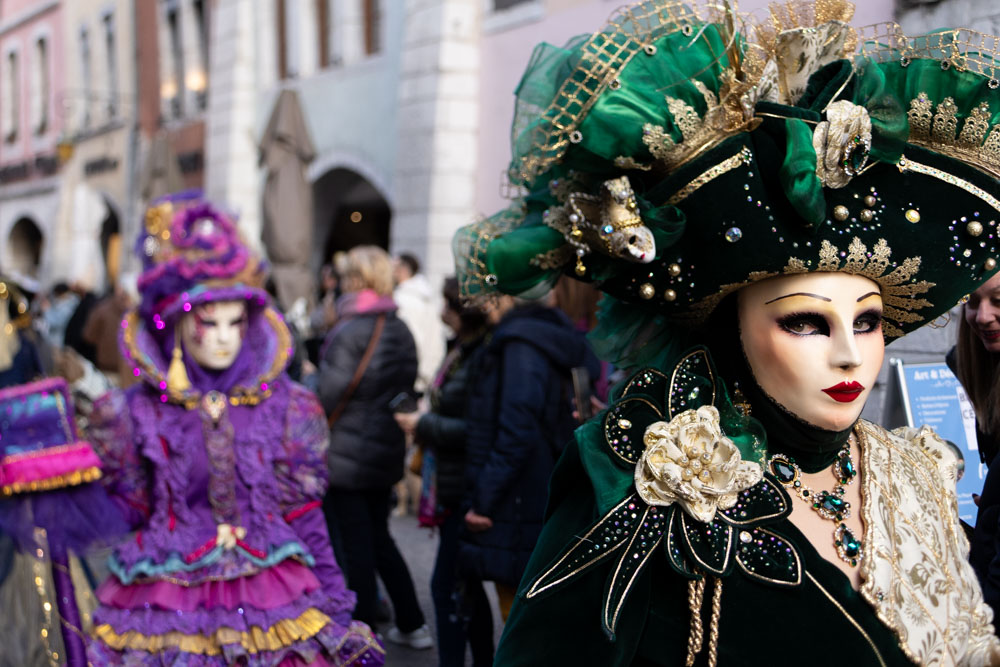
The use of masks throughout Eyes Wide Shut may be interpreted in many ways. A personal film favorite, I felt the masks were used to disguise the protagonist’s raging feelings of wrongdoing towards women and as well as his own blind eye towards his unhappy marriage.
Masks are alluring, mysterious accessories giving us the impetus to behave more candidly, much like a second glass of wine. In the early days of Venetian Carnevale, masks allowed all walks of society to rub shoulders, regardless of gender or clear-cut hierarchal distinctions. Mascherari, or mask makers, were highly respected in society and had their own guild.

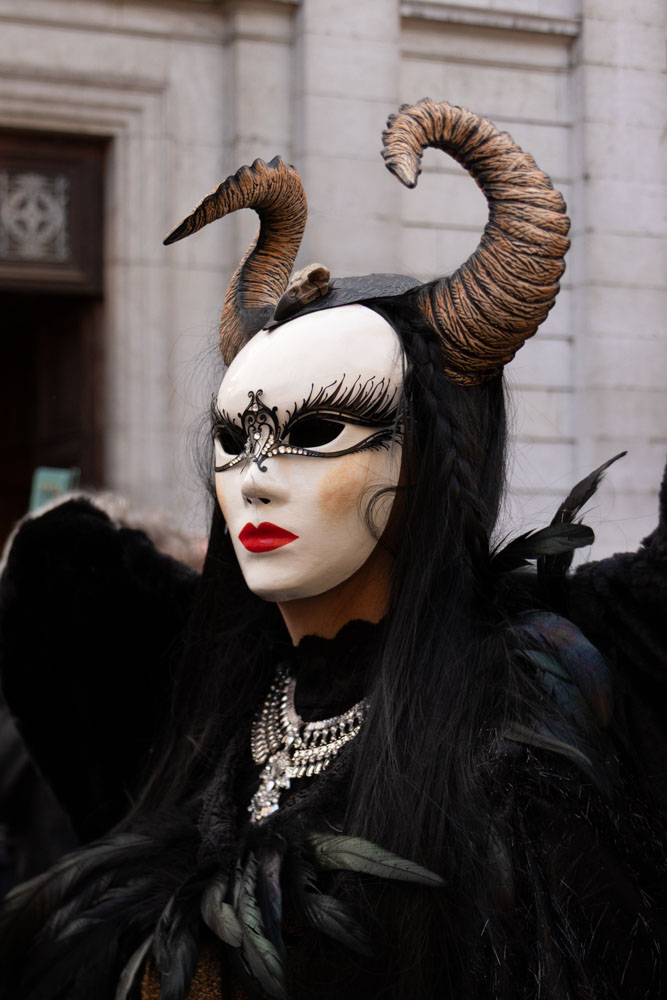
“Give a man a mask and he will tell you the truth,”
– Oscar Wilde
Each mask at the Venetian Carnival carries a unique history. Some of these masks have particularly intriguing tales, including:
The Bauta: Deriving from the German word “Behüten”, meaning “to protect”, the Bauta mask was allowed by the Doge of Venice outside of the months of Carnival. The mask, accompanied by a cape, had a beak shaped lower part, enabling the wearer to eat and drink without removing the mask, and even distorting his or her voice. In the 18th century, this mask was at times mandatory to wear at certain political meetings to vote anonymously. As it was impossible to guess who was behind a Bauta, it became common practice to greet the wearer with the same respect as Italian noblemen.
The Medico della Peste: I have two irrational fears – one being Victorian baby carriages and the second being the unsettling plague doctor mask. During the plague, the long, bird-like mask was worn as a health precaution when visiting patients. Two slits cut into the beak are said to be the world’s first attempt at a gas mask, filled with herbs to purify the air and prevent deadly microbes. The mask also served to combat superstitions of the day, such combatting negative spirits carried by the disease and frightening the evil away.
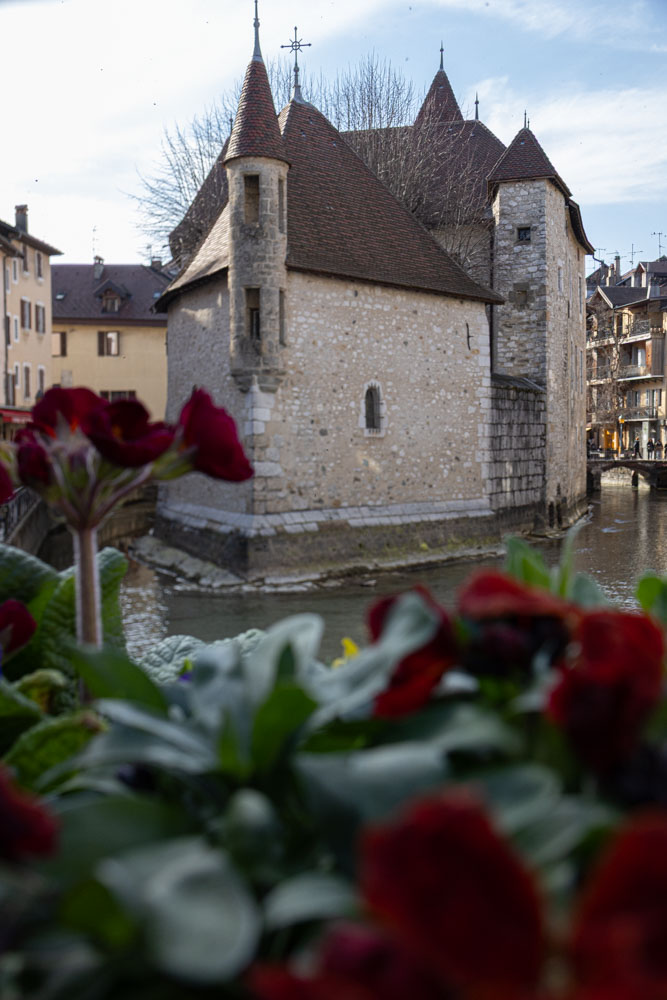

The Moretta: “A new religion that’ll bring ya to your knees. Black velvet if you please.” A rare find today in Venetian mask shops, the Moretta was a mask covered in black velvet, pressed closely to the face by biting a button by the mouth. Women who wore this mask remained completely silent, adding to her mystery. Removing the moretta was to not only see the wearer’s face, but also hear her voice.
The Gnaga: In 16th century Venice, a law forbade any masked person of being arrested, for wearing a mask meant playing a role as someone else (logic that..well, doesn’t fly by today’s standards). The Gnaga mask, resembling that of a cat, became popular among Venice’s homosexual population, accompanying the mask with women’s clothing. According to this article, the popularity of male encounters was such that local prostitutes made a plea to the bishop due to lack in customers.
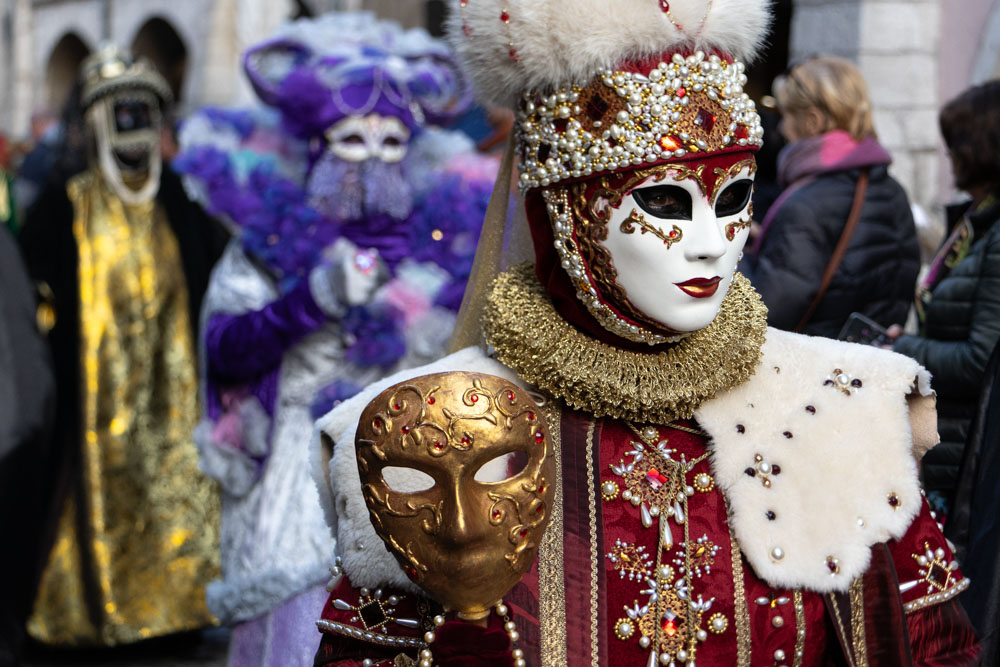
Traveling to Annecy
Annecy is a worthwhile destination throughout the year, even outside of Carnival weekend. Years back I spent my first weekend in Annecy and tried everything in my power to move to the Savoie region of France, settling on a master’s program in Chambery.
A firm believer in slow travel, a weekend is enough time to enjoy a picnic by the lake and stroll through the city’s Old Town, all the while testing regional specialties such as fondue, raclette or blueberry pie (even a shot of Chartreuse if you are feeling frisky).
Annecy’s warm colored buildings and canals seem very much like Disney’s Beauty and the Beast. The city is easily accessible from Geneva, Switzerland or Lyon, France by bus or train. For train travel from Geneva, tickets may be reserved on the Swiss railway’s website or by bus here.
- Machan, T. (2016, December 22). Venice takes off its mask. The Guardian. https://www.theguardian.com/travel/2009/feb/12/venice-carnival-local-street-party ↩︎

Another nice article! Well done and well written 🙂
Thank you so much for taking the time to read!
Loved this article! So totally charming and full of laughs! Gorgeous photos as well!
Thank you so much! Annecy is a beautiful destination!